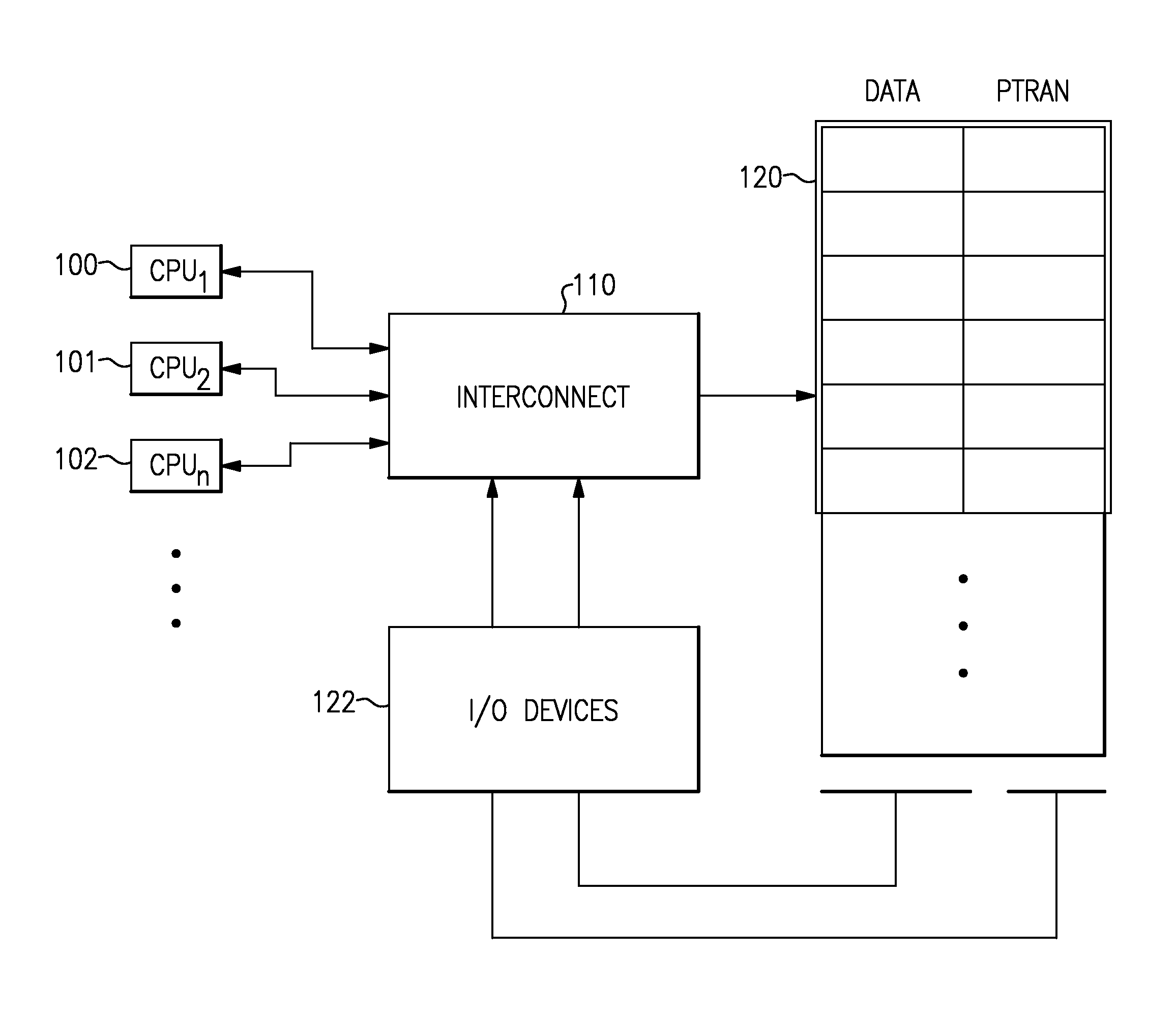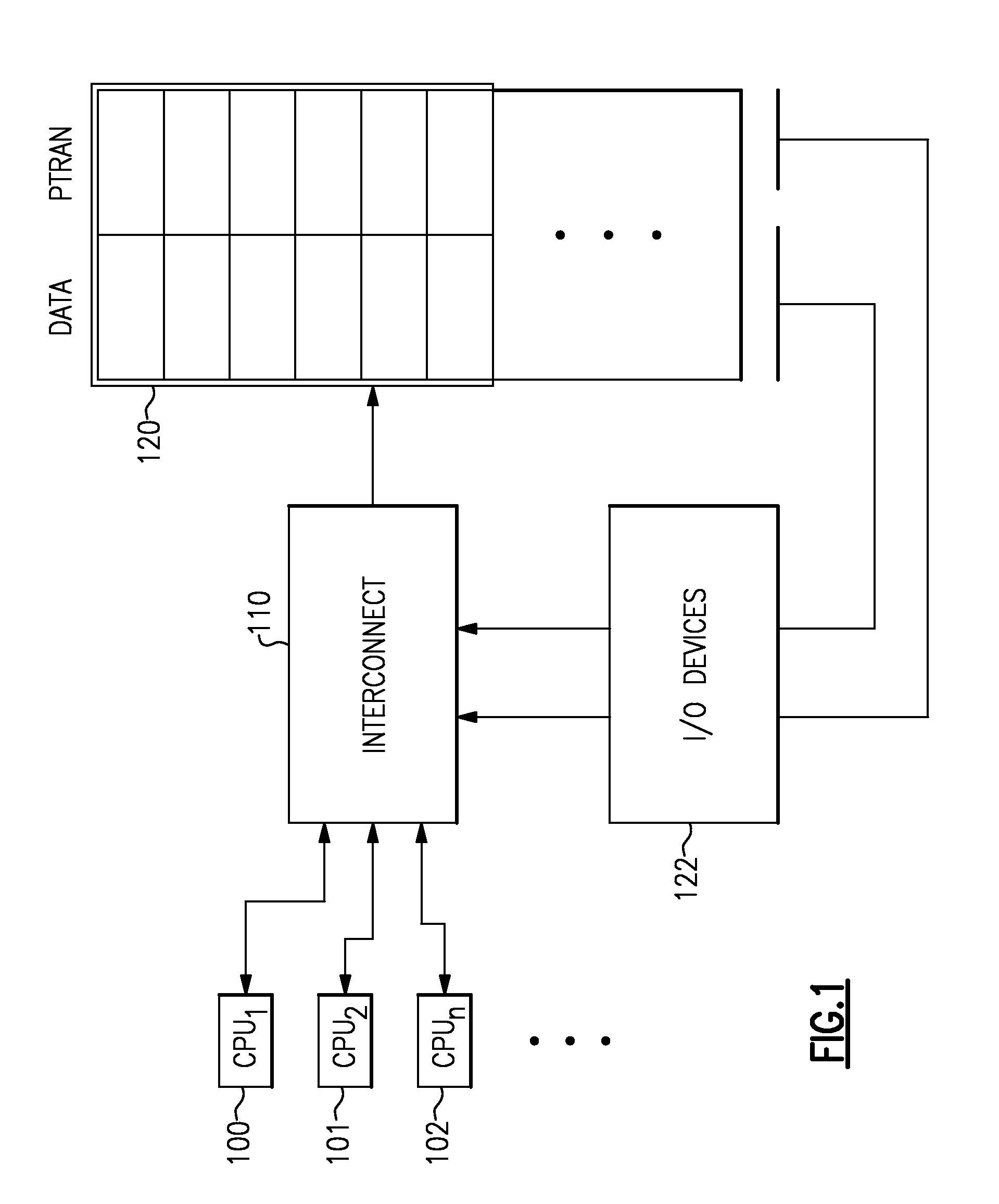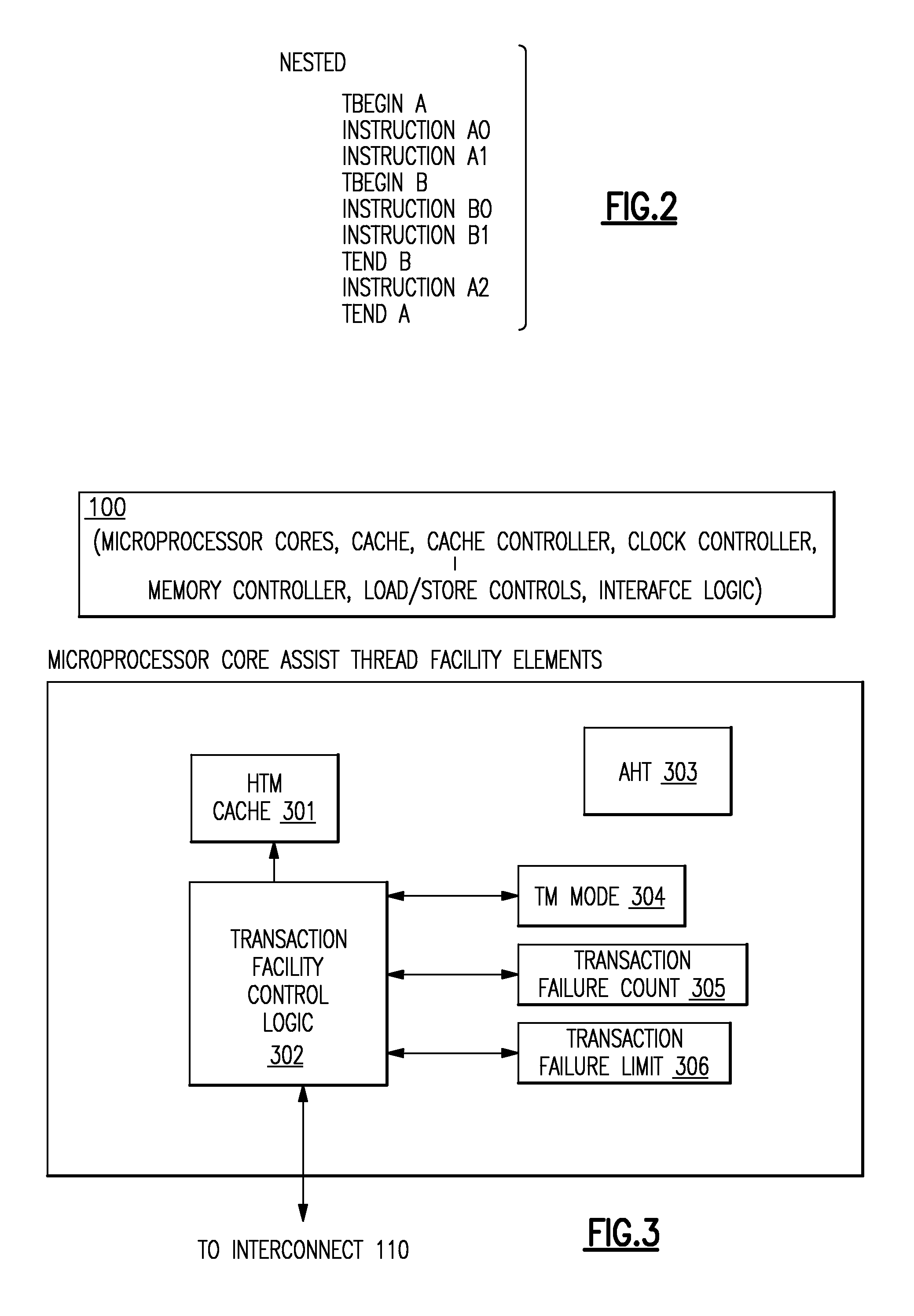Hybrid Transactional Memory System (HybridTM) and Method
a transactional memory and transactional technology, applied in the field of hybrid transactional memory systems, can solve the problems of multiple transactions, limited hardware, and inability to perform transactions at the same time, and achieve the effect of simple/cost-effective hardware design
- Summary
- Abstract
- Description
- Claims
- Application Information
AI Technical Summary
Benefits of technology
Problems solved by technology
Method used
Image
Examples
Embodiment Construction
[0027]1. Turning now to the drawings in greater detail, it will be appreciated that in FIG. 1 there is illustrated the computing system illustrating an embodiment of a Hybrid Transactional Memory System which is illustrated by use of a plurality of CPUs as a multiprocessor system with modules 1 . . . n, illustrated by CPUs 1 . . . n (100, 101 . . . 102), coupled to a system physical memory array (120) as well as other I / O devices (122) via a high speed interconnection element (110). Like other CPUs today, a CPU(computer processing unit) is integrated as in a multi-chip module with microprocessors which contain or are coupled in the CPU module to a memory controller, cache controllers, cache memory, and other components which form part of the CPU which connects to the high speed interconnect. The high speed interconnect functions under the architecture and operating system to interconnect elements of the computer system with physical memory, various I / O, devices and the other CPUs of...
PUM
 Login to View More
Login to View More Abstract
Description
Claims
Application Information
 Login to View More
Login to View More - R&D
- Intellectual Property
- Life Sciences
- Materials
- Tech Scout
- Unparalleled Data Quality
- Higher Quality Content
- 60% Fewer Hallucinations
Browse by: Latest US Patents, China's latest patents, Technical Efficacy Thesaurus, Application Domain, Technology Topic, Popular Technical Reports.
© 2025 PatSnap. All rights reserved.Legal|Privacy policy|Modern Slavery Act Transparency Statement|Sitemap|About US| Contact US: help@patsnap.com



